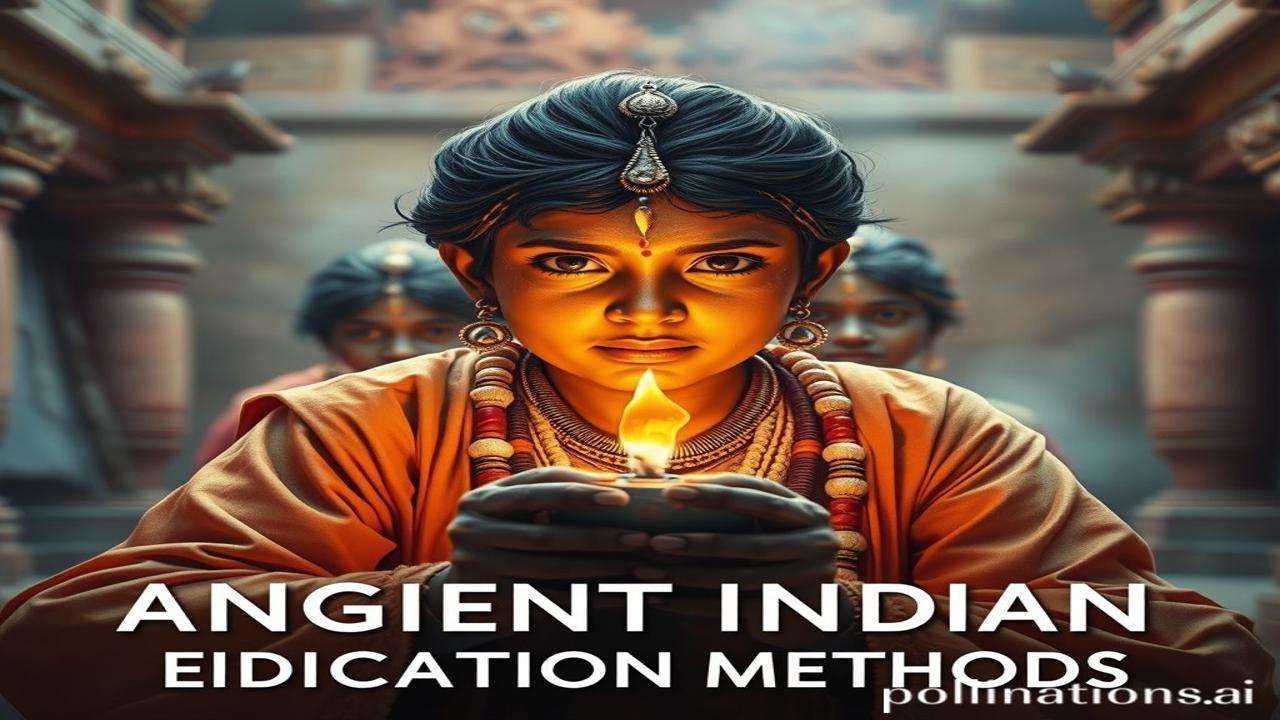Waqt Ke Panno Mein Kho Gaya: Ancient Indian Educational Methods – A Journey Through Time
Kabhi kabhi, jab main Ganga kinare baithta hoon, toh lagta hai jaise hawaon mein bhi ek purani kahani gunj rahi hai. Jaise yeh nadi, yeh mitti, yeh ped sab kuch yaad rakhe hue hain. Yaad hai woh din jab humare desh mein shiksha sirf kitaabon tak seemit nahi thi, balki jeevan ka ek anivarya ang thi. Imagine, 5000 saal pehle, ek aisi duniya jahan university mandir ke chhaya mein, aur pathshala peepal ke ped ke neeche chalti thi. Chaliye, us duniya mein ek safar karte hain!
The Golden Age of Learning: Bharatvarsh’s Shiksha Parampara
Ancient India wasn’t just about kings and battles. It was also a hub of knowledge and learning. Think about Takshashila, Nalanda, Vikramshila – names that resonate even today! These weren’t just schools; they were universities attracting scholars from across the globe. This period, roughly from the Vedic age (1500 BCE) to the decline of the Gupta Empire (550 CE), saw the flourishing of various educational systems. It wasn’t a centralized system like today; different schools and teachers followed their own methods, but the core values of knowledge, wisdom, and character building remained constant.
Why was this so important? Because rulers understood that true power lay not just in military might, but in an educated populace. They patronized these institutions, ensuring they thrived. Education was seen as the key to social mobility, personal growth, and spiritual enlightenment. It was a way to understand the world, the self, and the divine.
Gurukul Ka Jeevan: A Day in the Life of a Student
Imagine waking up before sunrise to the sound of temple bells. The air is crisp, and the scent of sandalwood and incense fills your nostrils. You are a student at a gurukul, far away from your family, living with your guru and fellow students.
Your day begins with sandhya vandanam (morning prayers) and learning shlokas (verses) from the Vedas. The guru, a wise and respected figure, imparts knowledge through lectures, discussions, and practical demonstrations. Some students are learning grammar and literature, others are mastering mathematics and astronomy, while some are training in martial arts and statecraft.
The focus was hollistic, so not just academics but life skills were prioritized. “Beta, samay ka sadupyog karo, yeh jeevan ka sabse bada mantra hai,” Guru Drona would often tell Arjuna and his other disciples. Food was simple and vegetarian, prepared with love by the guru’s wife. Evenings were for chanting, meditation, and storytelling. Every student, from the prince to the farmer’s son, lived a disciplined life, valuing simplicity, humility, and respect.
The atmosphere was collaborative, not competitive. Students helped each other, learning from each other’s strengths and weaknesses. It was a community built on trust, respect, and a shared pursuit of knowledge.
Dharohar: Ancient Education in Modern India
Even though the Gurukul system isn’t widespread, its echoes still resonate in India’s approach to education. The importance of guru-shishya parampara (teacher-student tradition) is still valued, even in modern schools and universities. The emphasis on character building, discipline, and holistic development are still considered important aspects of education.
You see it in the respect given to teachers, in the emphasis on moral values, and in the importance given to arts and culture in education. The spirit of Bharatiyata (Indianness) is deeply rooted in the ancient educational system. It’s not just about getting a degree; it’s about becoming a well-rounded, responsible, and contributing member of society.
Myth-Buster: Was Education Only for Brahmins?
Log aksar samajhte hain ki ancient India mein sirf Brahmins ko hi shiksha ka adhikar tha. Lekin asli sach yeh hai ki, while Brahmins played a significant role in preserving and imparting knowledge, education was accessible to other castes as well, depending on the field of study. Kshatriyas were trained in warfare and statecraft, Vaishyas in trade and commerce, and Shudras in various crafts and skills. While the depth and scope of education might have varied, access wasn’t completely restricted.
Sensory Symphony: Smells, Sounds, and Textures of Ancient Learning
Imagine the air thick with the fragrance of burning sandalwood and the sweet aroma of jasmine. You can hear the rhythmic chanting of mantras, the rustling of leaves in the wind, and the gentle murmur of conversations between students and teachers. The walls of the gurukul are cool and smooth to the touch, worn smooth by centuries of weather. The earthen pots filled with water are cool and refreshing.
The sunlight filtering through the leaves creates a dappled pattern on the ground. The sounds of nature are omnipresent, a constant reminder of the interconnectedness of all things. The silence during meditation is profound, broken only by the occasional chirping of birds. It’s a symphony of sensations that awakens the mind and nourishes the soul.
Antim Vichar: A Quote to Ponder
“Sa Vidya Ya Vimuktaye” – That is knowledge which liberates. This ancient Sanskrit saying encapsulates the true purpose of education in India – not just to acquire information, but to attain liberation from ignorance, suffering, and limitations. It’s a reminder that true knowledge is transformative, empowering, and ultimately leads to enlightenment. Toh, agali baar jab aap kitaab padhen, ya kuch naya seekhen, toh is mantra ko yaad rakhen. Who seekhna aapko mukti ki taraf le jaye.
